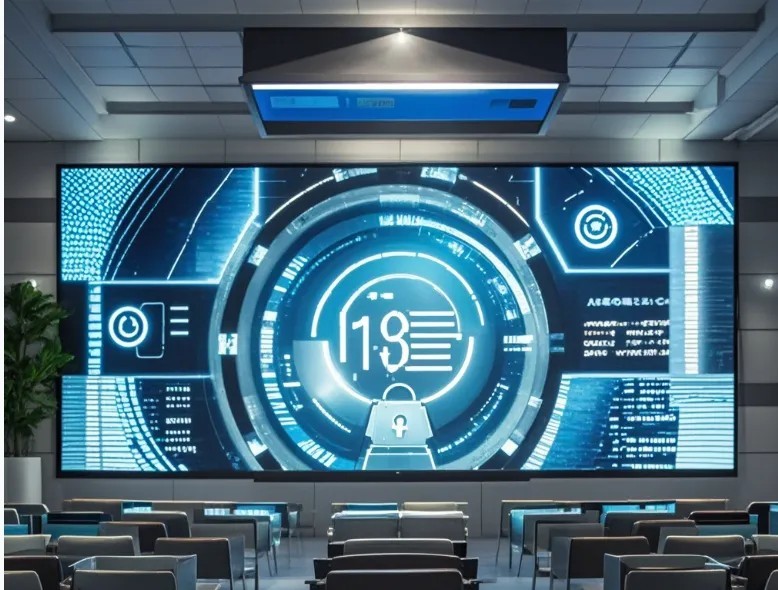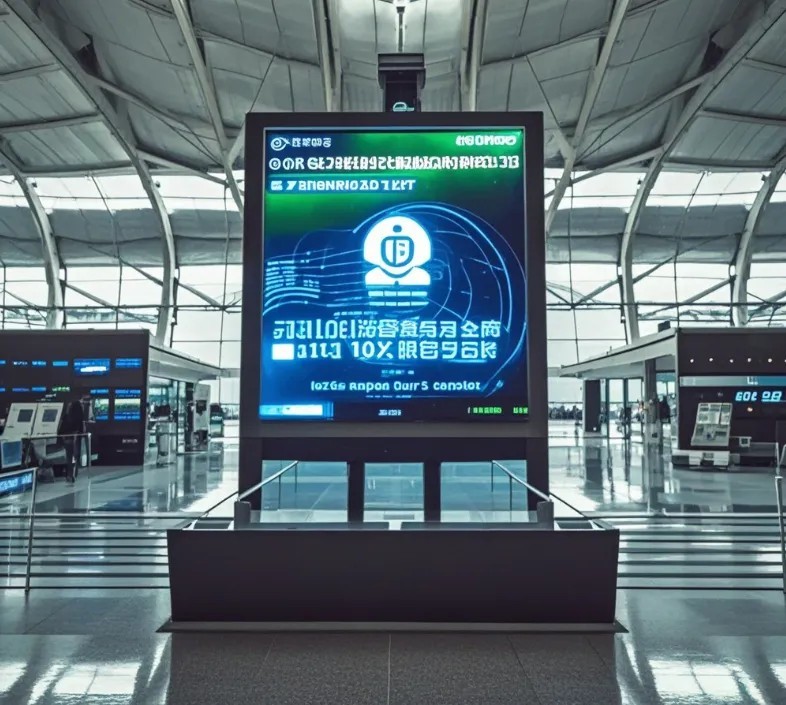2024-11-22
Defensive LED Display Public Information: Building a Digital Security Barrier
LED display screens in public environments serve as important carriers for disseminating public information. In the context of big data, their network security is crucial and has become an important issue for ensuring social stability and public interest.
LED large screens in public environments serve as important carriers for public information dissemination. In the context of big data, their network security is crucial and has become a key issue in safeguarding social stability and public interests.

1. Network Security Threats in the Context of Big Data
(1) The Shadow of External Attacks
Hacker Intrusions: Once hackers successfully exploit vulnerabilities in the LED display control system to spread false, reactionary, or malicious information, it will severely disrupt social order and cause public panic.
DDoS Attacks: Such attacks can paralyze servers, causing abnormalities or lags in updating the LED display content, thereby affecting the timeliness and accuracy of information dissemination.
(2) Hidden Internal Risks
Human Errors: Such as accidental file deletion, incorrect content pushing, or poor account permission management, which may lead to display chaos on the large screen, or even be exploited by malicious actors causing information leaks or inappropriate content display.
Equipment Failures and Data Leaks: Network equipment failures may trigger risks of data loss or leakage, especially during device maintenance and data transmission.
(3) The Whirlpool of Data Management Risks
Big Data Storage Challenges: As the usage time and application scope of LED displays accumulate, if the storage system lacks security, data may be stolen or tampered with.
Improper Data Analysis and Utilization: When analyzing LED display data, if the analysis models and algorithms have flaws, it may lead to incorrect advertising placement, affect the accuracy of information release decisions, and reduce the value of LED display usage.

2. Strengthening the Security Defense: Comprehensive Protective Measures
(1) Network Security Technical Protection: A Solid "Wall"
Firewalls and Intrusion Detection Systems:
Set up firewalls between the LED display control system and the external network to effectively filter illegal traffic and block unauthorized access. Meanwhile, intrusion detection systems can monitor abnormal system activities in real time.
Encryption Technology: Encrypt data in the LED display control system to ensure security during transmission and storage.
Vulnerability Scanning and Repair: Regularly scan LED display-related devices and programs for vulnerabilities and promptly fix any discovered issues.
Security Auditing and Log Recording: Enable security auditing functions to record operations and events of the LED display system. By analyzing logs, operational traces can be traced, and anomalies detected promptly.
(2) Personnel Management and Training: The "Beacon" of Security Awareness
Permission Management: Strictly divide management personnel permissions to ensure that content editors, technical maintenance staff, and others only have necessary rights, thereby reducing security risks caused by permission abuse.
Security Awareness Training: Strengthen security awareness training and operational standards for team members to effectively enhance employee vigilance.
(3) Data Security Management: The "Safe" for Data
Data Backup and Recovery: Establish a comprehensive data backup mechanism, regularly back up LED display-related data, and test the recoverability of backup data to quickly restore normal system operation in case of data loss or damage.
Data Access Control: Set strict data access control policies, using authentication and authorization methods to prevent unauthorized personnel from accessing sensitive data, effectively preventing data leaks.
(4) Equipment and System Management: The "Cornerstone" of Stable LED Large Screen Operation
Device Security Configuration: Securely configure LED displays and related network devices by changing default passwords, closing unnecessary ports and services, enabling security protection features, etc., to effectively reduce the risk of device attacks.
System Updates and Maintenance: Timely update the large screen's operating system, applications, and drivers, and regularly inspect and maintain devices and systems to ensure stability and security.
(5) Equipment and System Management: The "Cornerstone" of Stable Operation
Emergency Plans: Develop comprehensive emergency plans to quickly and effectively take measures during crises to minimize losses.
Emergency Drills and Improvements: Regularly organize emergency drills simulating various security incident scenarios to test and improve the effectiveness of emergency plans and enhance the team's emergency response capabilities.

We need to take multiple approaches to strengthen the security defense line, ensuring that the network security of LED large screens disseminates information beneficial to the public and maintains social stability. In the future, with technological development and richer application scenarios, we must continue to focus on LED display network security issues. Dehui LED displays will also continuously improve protective measures for LED public large screen solutions.
Scan the QR code below to get more LED display-related content and information. Welcome to consult and communicate~

Previous: LED Display: Collaboratively Building an Internet + Smart Fire Safety Platform
Next: A Brief Analysis of Display Technologies: Differences Between LCD, OLED, mini LED, and micro LED
Latest News


